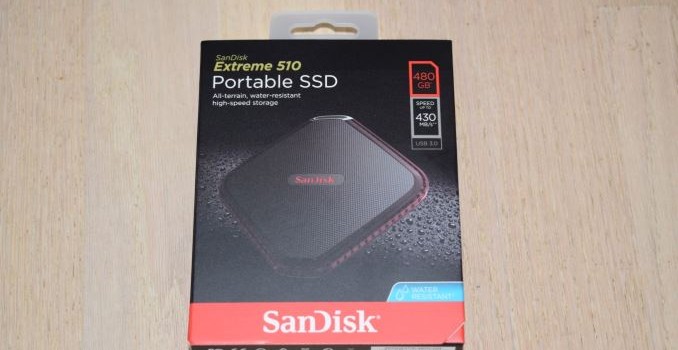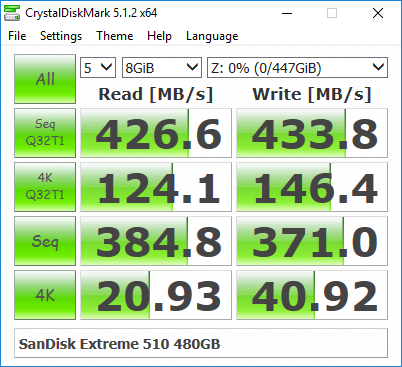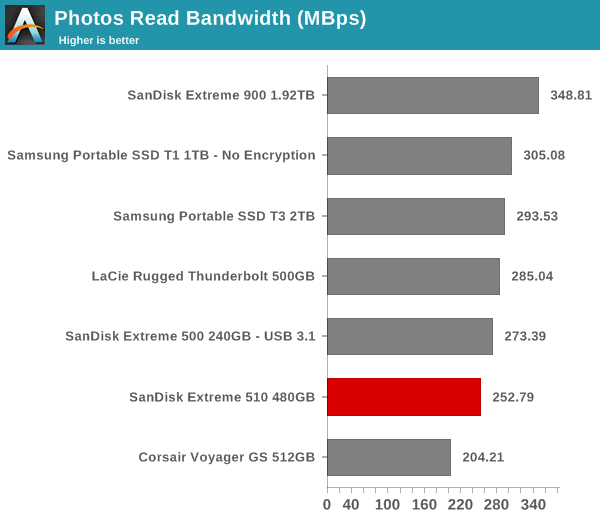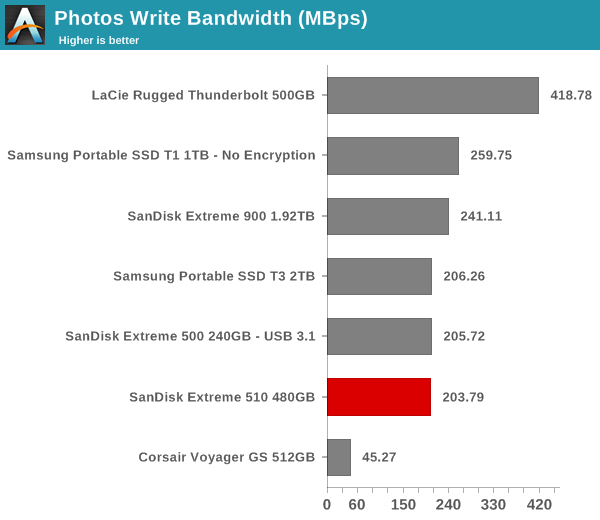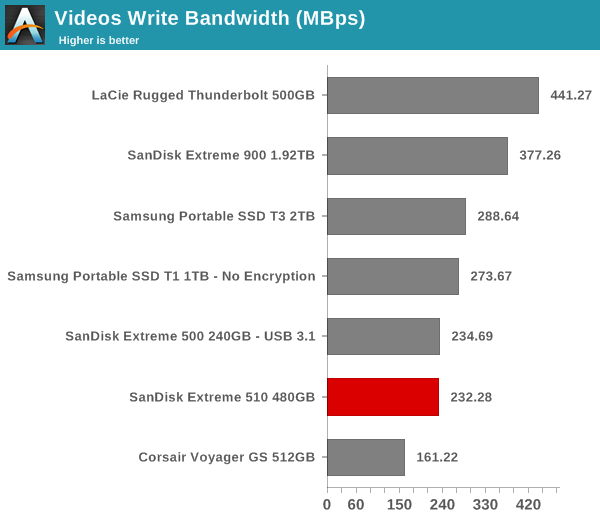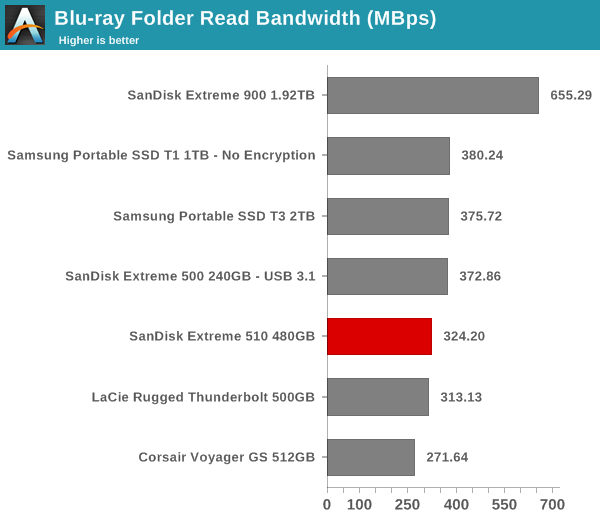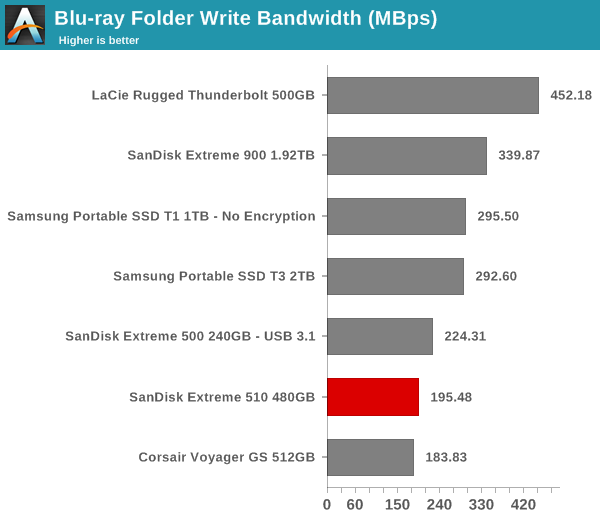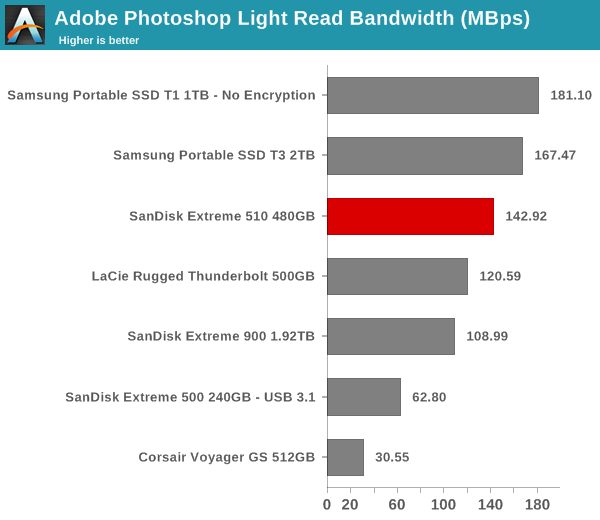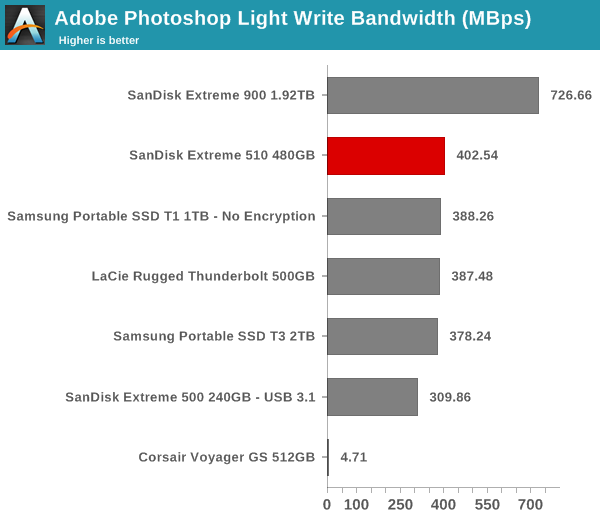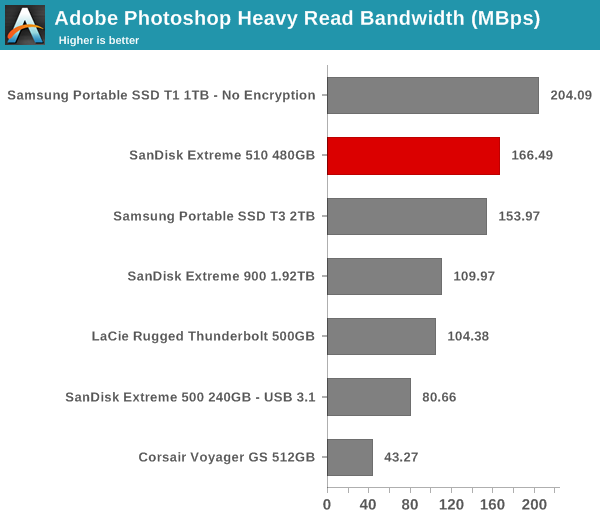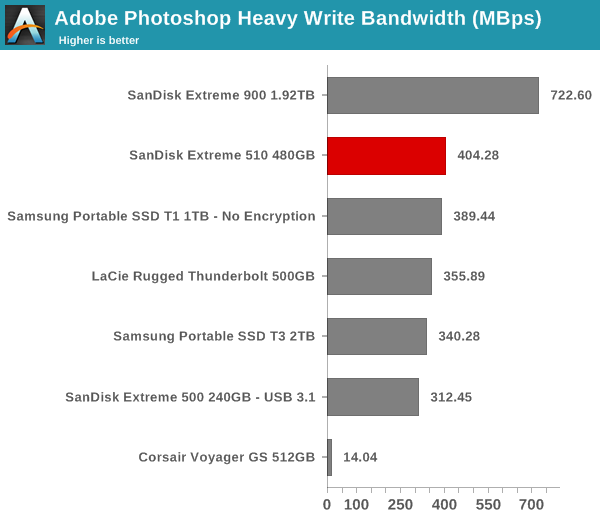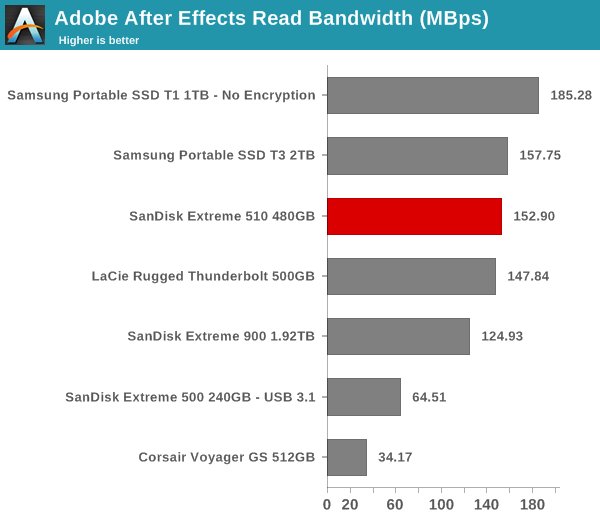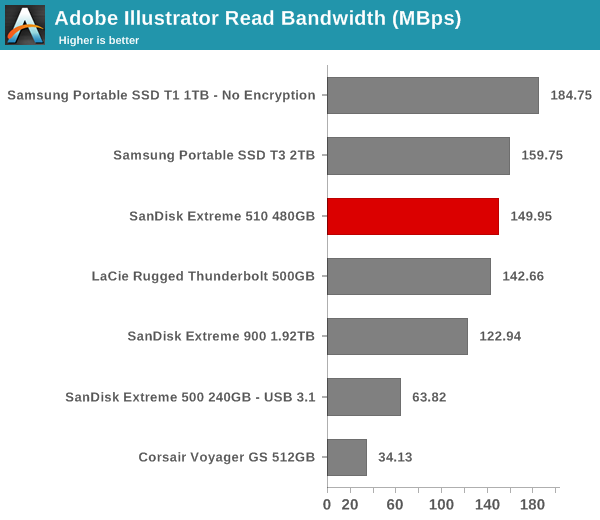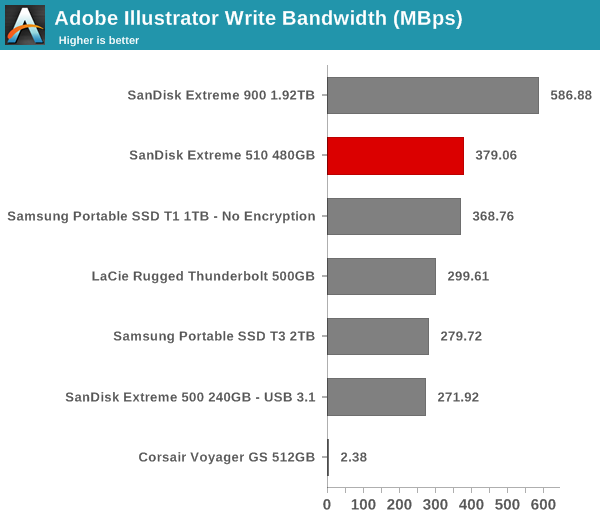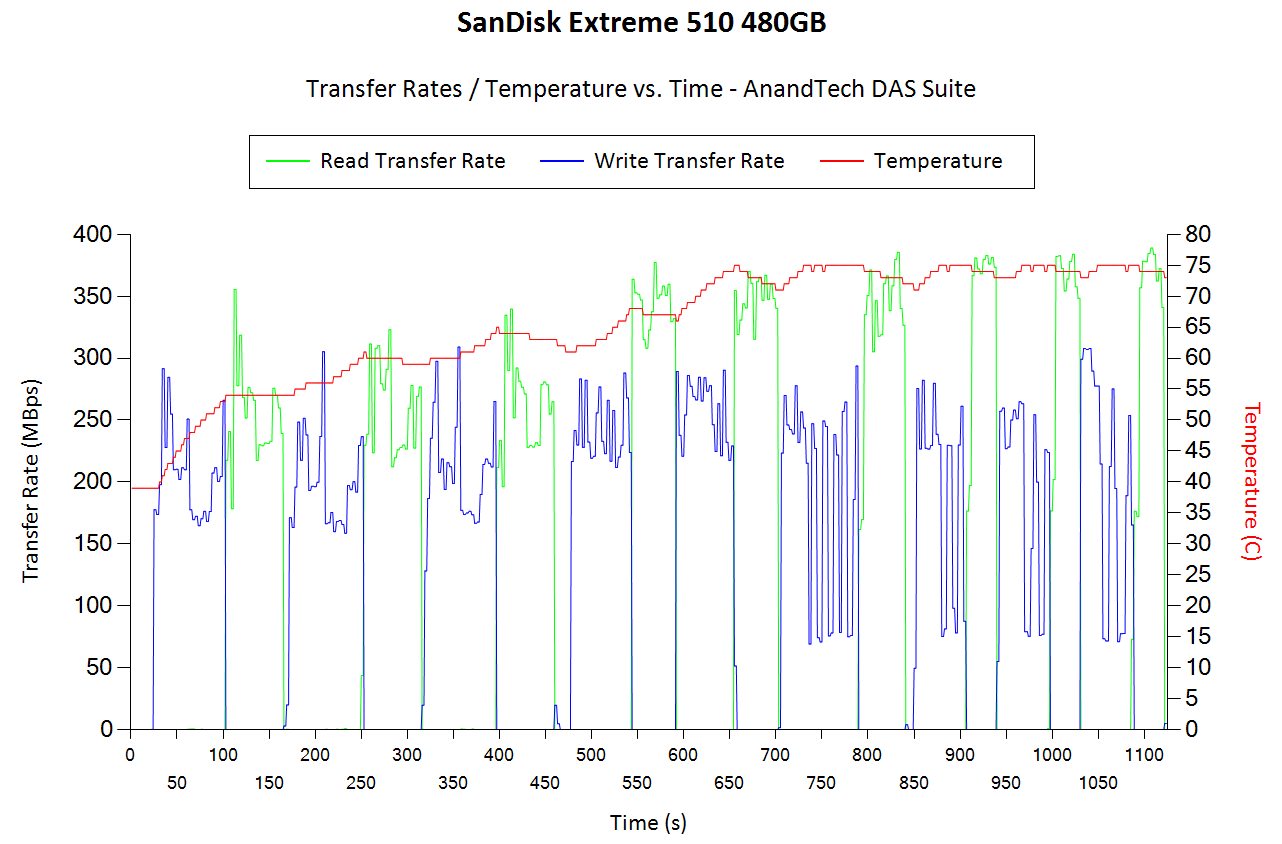SanDisk Extreme 510 Portable SSD Capsule Review
Rapid advancements in flash technology has coincided with the rise of USB 3.0 as an ubiquitous high-speed interface on computers. This has led to the appearance of small and affordable direct attached storage units with very high performance for day-to-day data transfer applications. We have already looked at many flash drives with SSD controllers and a USB 3.0 – SATA bridge over the last year.
SanDisk launched the Extreme 510 Portable SSD at the 2016 CES. In terms of external appearance, it looks very similar to the Extreme 500 Portable SSD that we reviewed late last year. The only differences lie in the fact that the Extreme 510 comes in only one capacity – 480GB. It also carries a IP55 rating (dust and water resistance), thanks to the rubber bumper around the unit. It is targeted towards content creators who want rugged high capacity storage in the field.
Unlike the Extreme 500 240GB sample (which was based on the SSD PLUS series with a Silicon Motion controller), the Extreme 510 480GB version is based on the Ultra II. The 480GB Ultra II sports the Marvell Renoir 88SS9189 SSD controller with SanDisk's 2nd Gen 128Gbit 19nm TLC NAND.
Disassembling the unit was quite similar to the process we adopted for the Extreme 500. The striking difference is the special coating for the PCB and the chips on the board. This makes the chip markings quite difficult to read. This coating does seem to affect the thermal situation, as we shall see further down in this review.
Testbed Setup and Testing Methodology
Evaluation of DAS units on Windows is done with the testbed outlined in the table below. For devices with a USB 3.0 (via a Type-A interface) connection (such as the SanDisk Extreme 510 480GB that we are considering today), we utilize the USB 3.1 Type-C port enabled by the Intel Alpine Ridge controller (along with a Type-C male to Type-A female cable). The Alpine Ridge controller connects to the Z170 PCH via a PCIe 3.0 x4 link..
| AnandTech DAS Testbed Configuration | |
| Motherboard | GIGABYTE Z170X-UD5 TH ATX |
| CPU | Intel Core i5-6600K |
| Memory | G.Skill Ripjaws 4 F4-2133C15-8GRR 32 GB ( 4x 8GB) DDR4-2133 @ 15-15-15-35 |
| OS Drive | Samsung SM951 MZVPV256 NVMe 256 GB |
| SATA Devices | Corsair Neutron XT SSD 480 GB Intel SSD 730 Series 480 GB |
| Add-on Card | None |
| Chassis | Cooler Master HAF XB EVO |
| PSU | Cooler Master V750 750 W |
| OS | Windows 10 Pro x64 |
| Thanks to Cooler Master, GIGABYTE, G.Skill and Intel for the build components | |
The full details of the reasoning behind choosing the above build components can be found here.
The list of DAS units used for comparison purposes is provided below.
- SanDisk Extreme 510 480GB
- Corsair Voyager GS 512GB
- LaCie Rugged Thunderbolt 500GB
- Samsung Portable SSD T1 1TB – No Encryption
- Samsung Portable SSD T3 2TB
- SanDisk Extreme 500 240GB – USB 3.1
- SanDisk Extreme 900 1.92TB
Synthetic Benchmarks – ATTO and Crystal DiskMark
SanDisk claims speeds of up to 430 MBps, and these are backed up by the ATTO benchmarks provided below. Unfortunately, these access traces are not very common in real-life scenarios.
CrystalDiskMark, despite being a canned benchmark, provides a better estimate of the performance range with a selected set of numbers. As evident from the screenshot below, the performance can dip to as low as 20 MBps for 4K random reads.
Benchmarks – robocopy and PCMark 8 Storage Bench
Our testing methodology for DAS units also takes into consideration the usual use-case for such devices. The most common usage scenario is transfer of large amounts of photos and videos to and from the unit. The minor usage scenario is importing files directly off the DAS into a multimedia editing program such as Adobe Photoshop.
In order to tackle the first use-case, we created three test folders with the following characteristics:
- Photos: 15.6 GB collection of 4320 photos (RAW as well as JPEGs) in 61 sub-folders
- Videos: 16.1 GB collection of 244 videos (MP4 as well as MOVs) in 6 sub-folders
- BR: 10.7 GB Blu-ray folder structure of the IDT Benchmark Blu-ray (the same that we use in our robocopy tests for NAS systems)
For the second use-case, we take advantage of PC Mark 8's storage bench. The storage workload involves games as well as multimedia editing applications. The command line version allows us to cherry-pick storage traces to run on a target drive. We chose the following traces.
- Adobe Photoshop (Light)
- Adobe Photoshop (Heavy)
- Adobe After Effects
- Adobe Illustrator
Usually, PC Mark 8 reports time to complete the trace, but the detailed log report has the read and write bandwidth figures which we present in our performance graphs. Note that the bandwidth number reported in the results don't involve idle time compression. Results might appear low, but that is part of the workload characteristic. Note that the same testbed is being used for all DAS units. Therefore, comparing the numbers for each trace should be possible across different DAS units.
Performance Consistency
Yet another interesting aspect of these types of units is performance consistency. Aspects that may influence this include thermal throttling and firmware caps on access rates to avoid overheating or other similar scenarios. This aspect is an important one, as the last thing that users want to see when copying over, say, 100 GB of data to the flash drive, is the transfer rate going to USB 2.0 speeds. In order to identify whether the drive under test suffers from this problem, we instrumented our robocopy DAS benchmark suite to record the flash drive's read and write transfer rates while the robocopy process took place in the background. For supported drives, we also recorded the internal temperature of the drive during the process. The graphs below show the speeds observed during our real-world DAS suite processing. The first three sets of writes and reads correspond to the photos suite. A small gap (for the transfer of the videos suite from the primary drive to the RAM drive) is followed by three sets for the next data set. Another small RAM-drive transfer gap is followed by three sets for the Blu-ray folder.
An important point to note here is that each of the first three blue and green areas correspond to 15.6 GB of writes and reads respectively. We do find that the temperature starts increasing sharply within the Photos suite itself. After the temperature reaches 75C (happens after more than 120GB of continuous traffic), the controller starts throttling the transfer rates.
We checked with SanDisk and confirmed that they could also reproduce the problem of extended writes triggering the thermal throttling on the controller. The water resistant coating was cited as the reason. SanDisk stressed that the Extreme 510 is best suited for consumers needing water resistance and durability / ruggedness in their portable flash drive.
Concluding Remarks
Coming to the business end of the review, the Extreme 510 builds upon the proven Extreme 500 design, and adds features required by photographers and other content creators in the field (namely, ruggedness with an IP55 rating).
The thermal throttling under sustained load is a minor point of concern. Given the 120GB of continuous traffic required to trigger the problem, it is likely that consumers are not affected by it in real-world situations. Another issue is that we were unable to confirm working TRIM, even though CrystalDiskInfo states that it is supported.
A typical name-brand 480GB GB SSD can be purchased or as low as $110. Even considering a small USB 3.0 enclosure for $20, the combination is definitely a whole lot cheaper than SanDisk's MSRP of $250 for the Extreme 510. The premium is for the smaller form factor as well as the waterproof nature.The IP55 rating does enable the Extreme 510 to effectively target a particular market segment despite the throttling problem. That said, most consumers (who don't need the IP55 rating) are better off with the Extreme 500 Portable SSD compared to the Extreme 510 discussed above.

